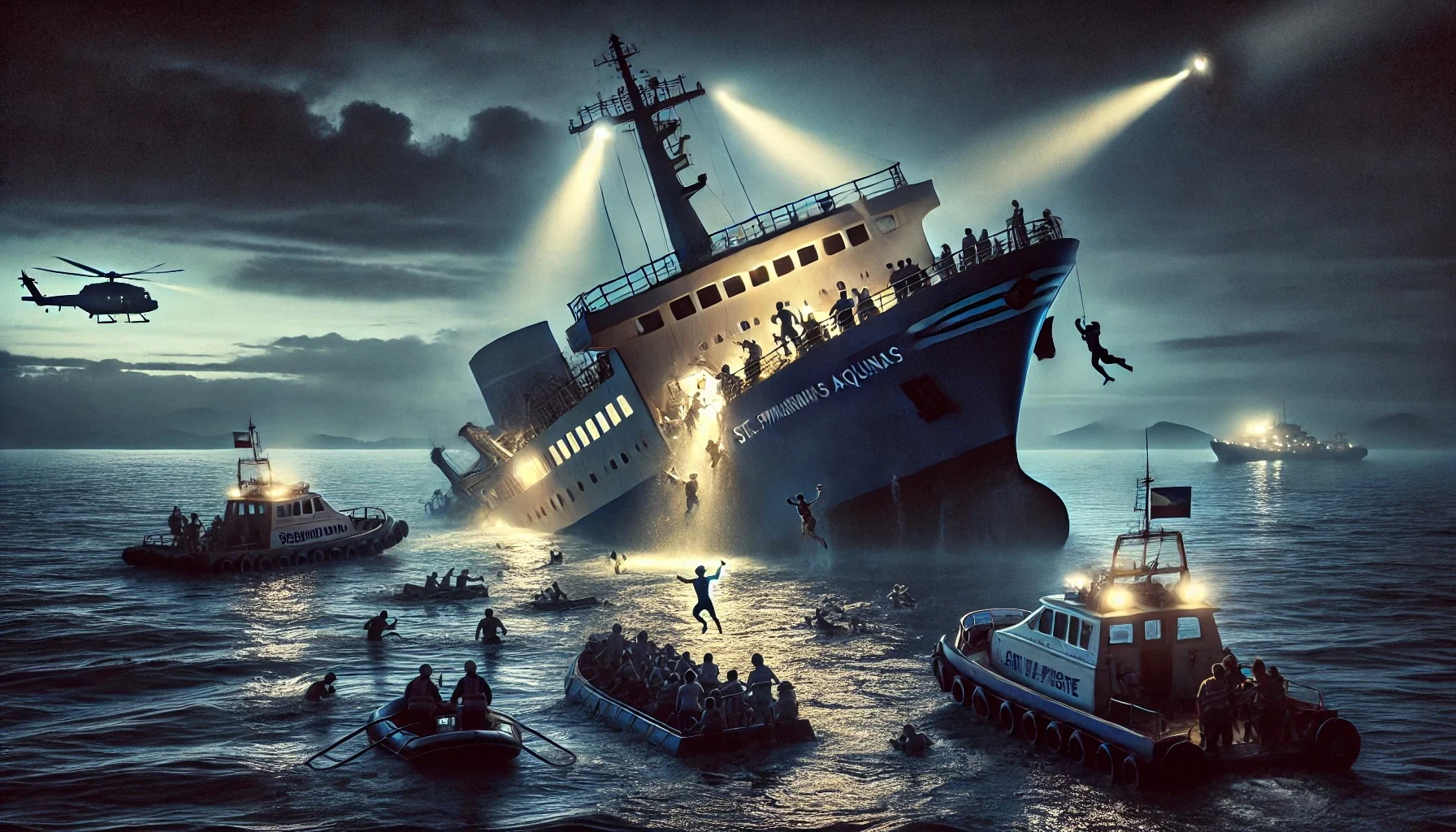
The St. Thomas Aquinas Ferry Collision
by: The Calamity Calendar Team
August 16, 2013
In the busy maritime corridor near Cebu, Philippines, the evening of August 16, 2013, was like any other—a symphony of waves and engines filled the air as ships navigated the bustling waters. But by the end of the night, a disaster would unfold, leaving a mark on the nation's maritime history and claiming the lives of 116 people.
The MV St. Thomas Aquinas, a passenger ferry operated by 2GO Travel, was en route from Nasipit, Agusan del Norte, to Cebu City. It carried over 800 passengers and crew, ranging from families with children to individuals on business trips, all looking forward to their journey's end. As the ferry approached Cebu, anticipation filled the air.
Meanwhile, the Sulpicio Express Siete, a cargo ship owned by Philippine Span Asia Carrier Corporation, was setting sail from Cebu to Davao, its hold full of goods. As the ships drew closer, a critical miscommunication unfolded. In the intricate ballet of maritime navigation, a failure in the give-way process—a critical part of ship communication and maneuvering—led to the unthinkable.
The Collision
At approximately 9:03 PM, just 1.2 miles off the coast of Talisay City, the two vessels collided. The impact was catastrophic. The St. Thomas Aquinas was struck on the side, tearing a massive hole in its hull. Water rushed in at an alarming rate, causing the ferry to list dangerously and begin sinking rapidly.
Panic ensued as passengers and crew rushed to abandon the sinking ship. Many jumped into the sea, clinging to life vests and anything that would float. For those without life jackets, the dark waters were especially treacherous.
Nearby vessels and local fishermen, who were accustomed to the waters and quick to respond, launched into action. Their efforts were heroic, pulling survivors from the water and offering life-saving aid in the chaos. Amidst the cries for help and the struggle to stay afloat, stories of bravery emerged. Survivors recounted tales of strangers helping each other, of crew members assisting passengers, and of fishermen saving lives.
Thanks for subscribing!
Rescue and Response
The Philippine Coast Guard and Navy quickly dispatched ships to the scene, coordinating rescue efforts that continued through the night. Despite the darkness and chaos, over 700 people were rescued, thanks to the swift and determined response of those involved. Yet, the tragedy was profound—116 people perished, and 21 were reported missing, their fate never fully resolved.
Environmental and Economic Impact
The disaster did not end with the loss of lives. As the St. Thomas Aquinas sank, it released approximately 120,000 liters of bunker fuel into the sea, creating an environmental hazard. The oil spill threatened marine life and impacted local fishing communities reliant on the waters for their livelihood.
Economically, the collision had significant repercussions. Ferry operations in the region were disrupted, affecting the companies involved and causing logistical challenges. The costs of rescue, recovery, and environmental cleanup were substantial, compounding the tragedy.
Investigation and Lessons Learned
In the aftermath, a thorough investigation was launched to determine the cause of the collision. The findings pointed to human error and poor communication between the ships, highlighting systemic issues within maritime operations. The Board of Marine Inquiry found that both vessels contributed to the accident due to these failures.
The tragedy spurred calls for reform. Improved maritime safety regulations, better crew training, and enhanced communication systems on vessels became urgent priorities. The Philippine Coast Guard faced pressure to enforce stricter monitoring and control of maritime traffic in busy areas like Cebu, where the risk of accidents is high.
Legacy of Change
Since the disaster, efforts have been made to enhance maritime safety in the Philippines. The government has focused on modernizing equipment, improving training programs, and raising awareness about traffic management and emergency response. While progress has been made, challenges remain in fully implementing these measures.
The collision of the St. Thomas Aquinas serves as a sobering reminder of the potential dangers of maritime travel and the importance of vigilance, communication, and preparedness. The stories of those who survived and the memories of those who were lost continue to resonate, inspiring ongoing efforts to prevent future tragedies at sea.
Stay in the Loop!
Become a Calamity Insider and get exclusive Calamity Calendar updates delivered straight to your inbox.
Thanks! You're now subscribed.